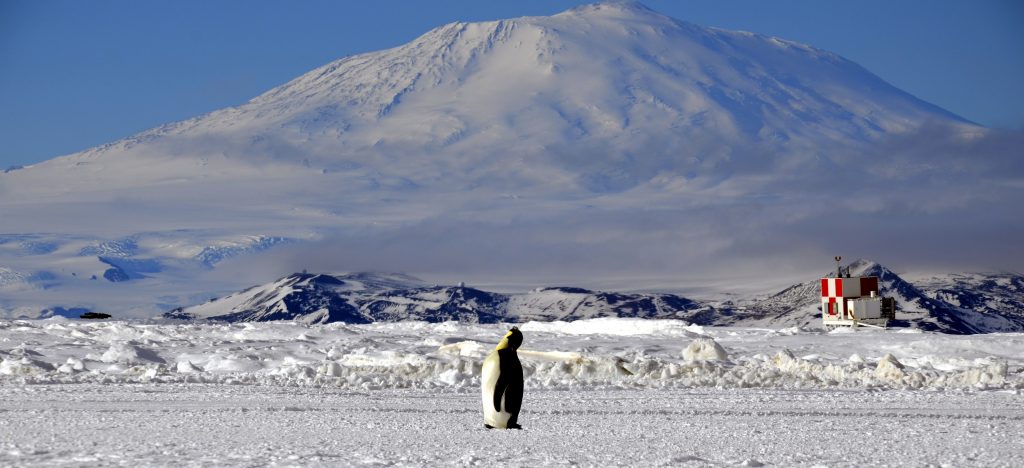UTIG Ph.D. candidate Chad Greene recently published a new study on how wind affects Antarctica’s Totten Ice Shelf. We talk to him about his research and his time at UTIG.

Your latest research looks at how wind affects the Totten Ice Shelf – what led you to research that topic?
Totten Ice Shelf stands between the ocean and an ice basin that contains at least 3.5 m of potential sea level rise, but we haven’t had a good grasp on how sensitive the ice shelf is to changes in its environment. This work was aimed at understanding Totten’s vulnerabilities and what forces acting on it can elicit a dynamic response.
What surprised you the most when working on this research?
Just how clear the connection is between wind over the ocean and the speed of this massive glacier. Following the chain of events, you see how each connection is strong – wind causes surface water divergence, and that raises the thermocline. Comparing profiling float data to wind stress, the cause-and-effect relationship between wind stress and thermocline depth is beautiful. Then we follow the chain of events, looking at how the increase heat content associated with an elevated thermocline melts and thins the ice shelf, and the ice shelf responds by speeding up. It was surprising to see how efficiently this Rube Goldberg device actually works.
You made some really interesting graphics (e.g. this video) – how did you make those? Why did you choose those formats and colors?
Thanks, I did my best to employ Tuftian principles wherever I could. To make the figures and the video I used Antarctic Mapping Tools for Matlab, which is a toolbox I developed for working with Antarctic geospatial data during my PhD work here at UTIG. The colormaps are from the cmocean set, designed to be intuitive and perceptually accurate. I was lucky enough to work with Kristen Thyng and other Texas A&M University oceanographers to create cmocean, and that collaboration even turned into a paper that came out last year in the journal Oceanography.
You have not only worked with scientists at UTIG but also ones at other institutions around the world – what benefits are there to working with a global team?
This work wouldn’t have been possible if I hadn’t met David Gwyther when he spent a year here at UTIG as a Fullbright Scholar. Dave has been hugely helpful in coming up with ideas for experiments and interpreting results.
Why did you choose UTIG for your Ph.D.?
I saw opportunities at UTIG to go to far-flung places, to use my engineering background, and to learn about how the world works. Where else could I get experiences like this?

What has been your favorite part about working and studying at UTIG?
The freedom to pursue things that interest me. I’ve never felt shackled by any sort of performance metrics, and as a result, I’ve been free to explore almost any subject. Some weeks I have nothing to show for my time in the office, but in those weeks I learn. UTIG is a place where latent progress is still valued as progress.
What advice would you give to other graduate students?
Keep a good notebook. I print out every figure I create. I paste them all in a notebook with the filename of the image and the script I used to create it. It’s a painstaking process and 95% of the figures in my notebook never get used, but I don’t always know which types of analysis I’ll need to come back to. It’s been a lifesaver to be able to flip through my notebook and immediately see which of my Matlab scripts I need for any given task.
What are your plans after you complete your Ph.D.?
This grad student gig has been a pretty sweet deal. A postdoc seems to be the best way to keep livin’ the dream!
